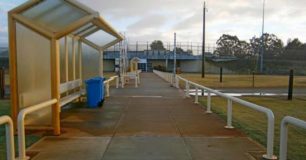Background
Casuarina had previously been found to suffer from overcrowding, excessive double bunking, underemployment, unemployment, ailing infrastructure and services, insufficient support for Aboriginal prisoners, and inadequate custodial staffing. In the period between 2010 and 2013, the prison was found to have improved its prisoner accommodation through two new units, but had not made the needed improvements …
Read moreConclusion
Casuarina’s focus on security, while additionally supporting reintegration, specialised care, and Aboriginal prisoners is a difficult balancing act. Under the pressure of overcrowding and insufficient resourcing and infrastructure, the prison struggled to balance its maximum security role with other specialised responsibilities. The Department had improved Casuarina’s provision of single-cell accommodation. However, infrastructure remained in need …
Read moreKey Findings
Casuarina accommodated 631 prisoners at the time of the inspection. The Department provided two new accommodation units, the prison’s design capacity increased from 397 to 473, and a lower rate of double bunking was achieved. Despite these improvements the prison remained crowded, with insufficient infrastructure, services, and custodial staffing. Casuarina held twice as many remand …
Read moreRecommendations
Ensure low security prisoners are able to access appropriate regimes focussed on supporting reintegration. Provide sufficient staffing levels to cover all of the prison’s internal and external duties, including industries, education, staff training, medical escorts and additional hospital sits, without recourse to excessive overtime or redeployment. Improve staff retention and stability by: ensuring that Casuarina …
Read more


